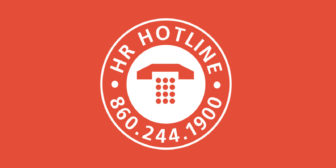Mental Health: Core to Workplace Safety

The definition of workplace safety continues to evolve—and for good reason.
Safety today is not just about fall protection or hard hats. It includes mental health and emotional well-being.
Ignoring that reality puts employees and organizations at risk: legal exposure, low morale, high turnover, reputational damage, and, in the worst cases, suicide.
Mental health is a safety issue. It should be treated as one.
Construction Suicide Prevention Week
This week, Sept. 8–12, marks Construction Suicide Prevention Week, a nationwide effort launched in 2019 to raise awareness of suicide in the construction industry and provide resources for prevention.
This year’s theme is Build Community, and the message is simple, check in with your people.
Mental health is a safety issue. It should be treated as one.
Isolation and loneliness are common risk factors in construction. Long hours, physical injuries, seasonal work, and separation from family all contribute.
Something as basic as asking how a coworker is doing (and listening) can make a difference.
OSHA’s Message
The Occupational Safety and Health Administration is drawing attention to mental health in construction.
OSHA data shows that the suicide rate for construction workers is nearly four times higher than the general population.
Contributing factors include:
- Irregular or demanding work schedules
- Chronic pain and injury
- Financial pressure
- Cultural stigma around seeking help
OSHA provides tools for employers, including guidance on warning signs, integrating mental health into safety programs, and connecting workers to resources like the 988 Suicide and Crisis Lifeline.
Paid Sick Leave and Mental Health
Employers should understand both the compliance obligations for Connecticut’s expanded paid sick leave law and the opportunity to support mental health as part of broader workplace safety goals.
For reference, PSL compliance is required as follows:
- Jan. 1, 2025: Employers with 25 or more employees
- Jan. 1, 2026: Employers with 11 or more employees
- Jan. 1, 2027: Employers with at least one employee
Paid sick leave in Connecticut can be used for both physical and mental health.
Paid sick leave in Connecticut can be used for both physical and mental health. That means employees can take a day for anxiety, burnout, or depression without stigma or policy confusion.
From a legal perspective, policies and handbooks must be updated.
From a cultural perspective, employers who normalize mental health days signal that emotional well-being matters, and that it’s okay to take a break before a problem becomes a crisis.
Business Case for Mental Health
Legal and ethical expectations are changing. Employers that ignore mental health risks could face claims of negligence or workplace safety violations.
But there’s also a clear operational and financial impact. Supporting mental health leads to:
- Fewer sick days
- Greater productivity
- Higher employee engagement
- Lower turnover
Ignoring mental health can result in absenteeism, errors, accidents, high recruiting costs, and the loss of trust.
Ignoring mental health can result in absenteeism, errors, accidents, high recruiting costs, and the loss of trust within a team. In extreme cases, the cost is even greater and irreversible.
Investing in mental health support is far more effective and sustainable than reacting to a tragedy.
Resources like employee assistance programs, mental health training, and built-in time off are not just check-the-box initiatives. They help keep employees healthy and working.
The cost of prevention, both financial and cultural, is small compared to the cost of crisis response. And the return on investment is significant.
What Employers Can Do
- Review your safety programs to ensure mental and emotional health are included
- Update paid sick leave policies to reflect Connecticut’s new requirements and clarify that leave can be used for mental health
- Train supervisors to recognize signs of distress and respond appropriately
- Promote resources like employee assistance programs and the 988 Lifeline
- Build community through mentorship, peer check-ins, and regular conversations that go beyond task lists
Safety in the workplace must be understood broadly.
Construction Suicide Prevention Week, OSHA’s emphasis on mental health, and Connecticut’s new paid sick leave law all point in the same direction.
Mental health is a compliance issue, a workplace culture issue, and, above all, a human issue.
Employers are encouraged to make this part of their ongoing safety strategy, not just because the law is moving that way, but because it’s the right thing to do.
For more information, contact CBIA’s Delmarina López (860.244.1982).
RELATED
EXPLORE BY CATEGORY
Stay Connected with CBIA News Digests
The latest news and information delivered directly to your inbox.



